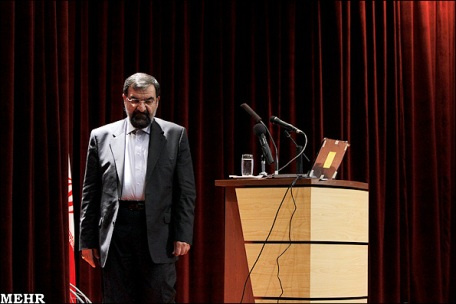From the Other Media: What Path Are We Going to Follow

Twenty-three years ago, when war with Saddam Hussein finally came to an end, I asked myself this question: is our challenge with the West finally over, or is it going to resume? But for me, the more consequential question was that in case of resumption, what form would it take?. It did not take long to find the answer to both questions: our challenge with the West would go on, in both the economic and cultural domains.
The Reconstruction Era
Immediately after the end of the war, the reconstruction venture was initiated, and my friends and I [in the Revolutionary Guards] rendered full-scale assistance to the government. Hundreds of highways, dams and bridges were constructed across the country; but I found out that our economy would not reach a desirable point, even if thousands of projects were accomplished. The Iranian economy’s problems could not be solved with the prescribed models of Reza Shah (1), Hashemi Rafsanjani, Khatami or Ahmadinejad.
I was thinking then what would happen if we failed in our economic endeavor and faced an economic war afterwards. Such worries encouraged me to return to the university and change my major from mechanical engineering in the Iranian University of Science and Technology to economic studies in the University of Tehran, so that I could be of more effective help to the country’s officials.
Thanks to the détente policy [of Hashemi Rafsanjani and Khatami], the economic war was deferred for years; nonetheless, I was still engrossed with Iran's economic plans. I saw how South Korean workers and Indian physicians were leaving Iran, as the economies of their own countries were outpacing ours. It did not take long before the corrupt culture and value system of the Pahlavi regime –either rooted out or oppressed by the Islamic Revolution- resurfaced. It was not the time for me to stay in the Sepah anymore. I left the organization [in 1997], but to date, I have been unable to achieve what we had, with support from revolutionary forces, in the domains of security and defense [during the 8-year war with Iraq]. Following the ouster of revolutionary groups from administrative affairs, citizens were also all but barred from politics. Even during the heyday of the “civil society” discourse [in Khatami's era], citizens were merely engaged in politics. But this is no time to rake up the old arguments. So let’s get to the core of the issue:
What should be done?
Today, despite sixteen years of détente policy, an economic war between Tehran and Washington has broken out. As the third confrontation between Iran and the West, this war began its development in the days of George W. Bush, and moved on to a more adverse pitch during Obama's tenure, particularly since two years ago.
After a four-year moratorium, Iran’s political establishment and the Supreme Leadership picked up the gauntlet and inaugurated an era of proactive, resistance-based policy via Ahmadinejad's administration, after a period of endurance. In this struggle, both Iran and the US have pressed each other for compromise, though Iran has –inadvertently- helped the Americans by self-boycotting itself economically [by sidelining the citizens], and inflicting harm on itself politically.
Despite all the squandered opportunities, the Iranian nation has yet the chance to come out of this war as the victorious side, provided that the officials and political parties dispense with their sweet dreams and think of a strategic plan. This plan should zero in on certain objectives including:
1. An economic leap, sustained employment and the eradication of unemployment;
2. Neutralization of the economic war and the West’s sanctions;
3. Reinforcement of ties with the Islamic Awakening movement and the new regimes coming to power in the region;
4. Active, constructive and effective diplomacy.
This strategy, however, calls for returning citizens back onto the stage. Problems will pile up as long as reconstruction and economic war remain out of the citizens’ zone of activity. The state of gold and foreign exchange markets that we are witnessing today is just a product [of our economic conduct], impossible to be cured by short-lived painkillers. It has been twenty years now that except for politics, citizens have been sidelined in economic and cultural domains. Two possible means to return citizens to the scene are worth pondering:
1. The first model follows what took place in South Korea, China and Japan: administration of economic affairs is assigned to a seven-man strong team. This team should be qualified for carrying out this transformation, and should have a viable plan.
2. The second model patterns itself on Iranians’ participation during the Islamic Revolution and the Sacred Defense [against Saddam Hussein’s invasion.] This model calls for a genuine, not cosmetic, economic jihad and the return of the spirit of devotion instead of power- or wealth-mongering.
I want to know which model Iranian statesmen are willing to adopt, since there lies no benefit in following the methods applied during the past two decades, however effective they were in their own time.
(1) The first monarch of the Pahlavi dynasty who followed an authoritarian model of modernizing Iran.

